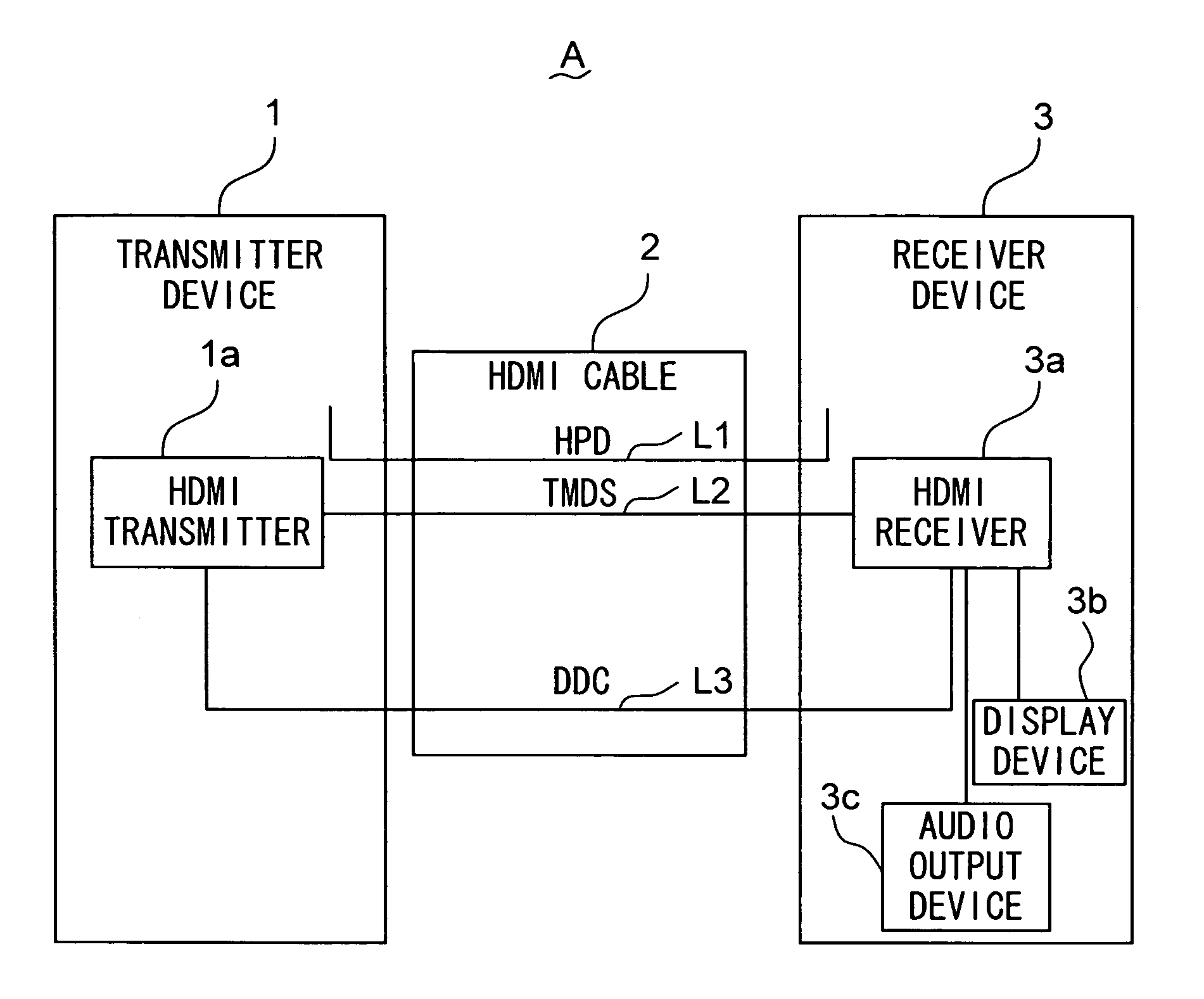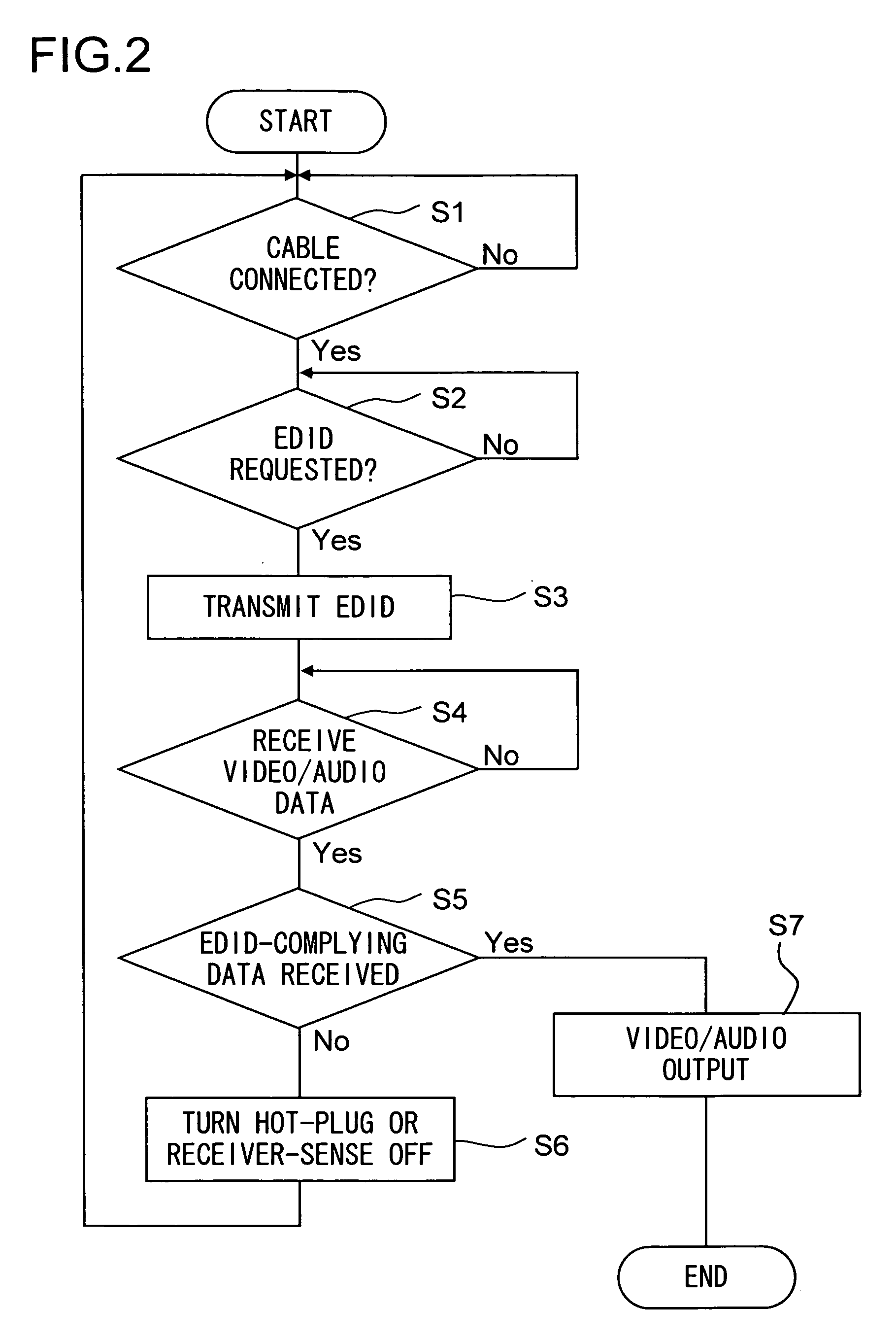Image display system and receiver device
a display system and receiver technology, applied in the field of image display systems, can solve the problems of image information from the dvd playback device not being displayed on the hdmi monitor, image information from the transmitter device not being displayed on the receiver device, and the image display device cannot confirm whether or not the edid information is irrelevan
- Summary
- Abstract
- Description
- Claims
- Application Information
AI Technical Summary
Benefits of technology
Problems solved by technology
Method used
Image
Examples
Embodiment Construction
[0026] Hereinafter, an embodiment of the present invention will be described with reference to the drawings. FIG. 1 is a block diagram showing an image display system embodying the present invention.
[0027] As shown in FIG. 1, the image display system A is composed of: a transmitter device 1, such as a DVD player furnished with an HDMI terminal, that can transmit video data and audio data; and a receiver device 3, such as a television monitor or a projector, that is connected via an HDMI cable 2 to the transmitter device 1 and that has the capabilities of displaying video based on video data from the transmitter device 1 and of outputting audio based on audio data from the transmitter device 1.
[0028] The transmitter device 1 is provided with an HDMI transmitter 1a that transmits video data and audio data conforming to the HDMI standard. The HDMI cable 2 is provided with: a TMDS line L2 via which the video data and the audio data from the HDMI transmitter 1a is transmitted to the re...
PUM
 Login to View More
Login to View More Abstract
Description
Claims
Application Information
 Login to View More
Login to View More - R&D
- Intellectual Property
- Life Sciences
- Materials
- Tech Scout
- Unparalleled Data Quality
- Higher Quality Content
- 60% Fewer Hallucinations
Browse by: Latest US Patents, China's latest patents, Technical Efficacy Thesaurus, Application Domain, Technology Topic, Popular Technical Reports.
© 2025 PatSnap. All rights reserved.Legal|Privacy policy|Modern Slavery Act Transparency Statement|Sitemap|About US| Contact US: help@patsnap.com



